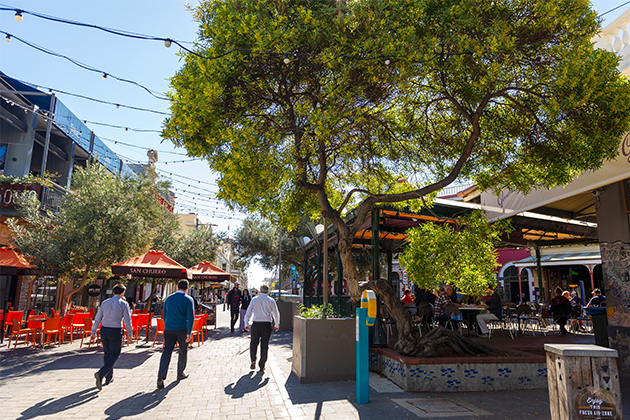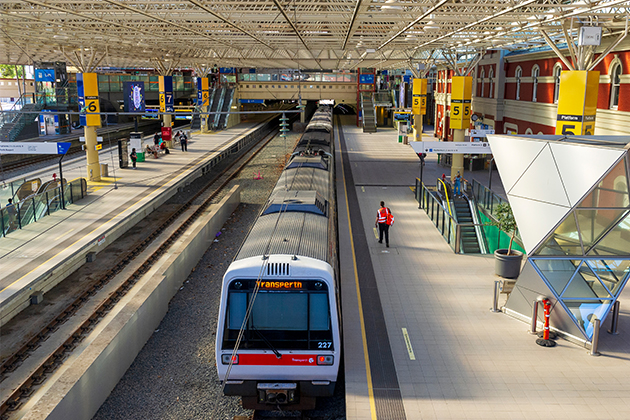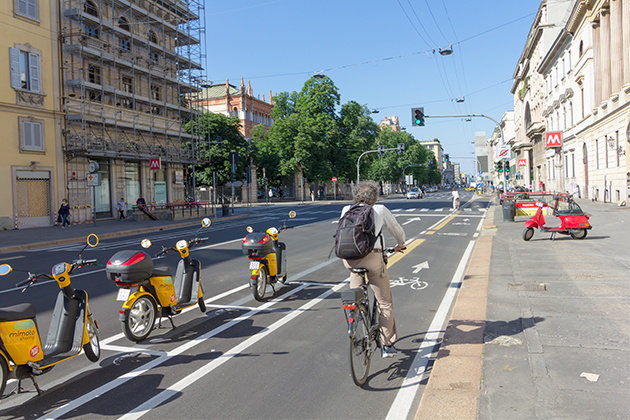15 July, 2020 By: Ruth Callaghan
As our community adjusts to new ways of working and moving around our city and suburbs, transport experts are considering how things may change more permanently after COVID-19.
It was 270 years ago that London acted to address an outbreak that had killed more than 30,000 of its citizens, albeit over a period of about 30 years.
The foul, sewage-filled sludge that was the Thames River had fed waterborne outbreaks of typhoid and dysentery, but it was cholera - known as the Victorian Plague - that was most feared.
Fixing the problem required not just a public health intervention but an urban design response: 82 miles of new sewers, larger than train tunnels, were introduced to improve the quality of the waterway covered by the Victoria Embankment, which today remains a much-loved promenade for commuters, runners and cyclists.
There are many other examples throughout history of how disease can reshape cities, from Leonardo da Vinci’s unrealised plans to redesign Milan so it would be less susceptible to the plague, to designing for sunlight and fresh air in New York’s buildings to prevent the spread of tuberculosis.
There’s no doubt COVID-19 will leave its mark on our cities as well — but what that legacy will be is not yet clear.
Will we become more congested as people stop using buses and trains, and see the roads fill with more cars?
Or will the thousands of Western Australians who have found they can work from home create a new suburban village revival?
Will they walk and ride more in their neighbourhoods, supported by wider paths to encourage social distancing — or even take the opportunity to move to regional hubs and work remotely?

A worldwide reset
It is a conversation that’s taking place worldwide, says Anne Still, RAC general manager, Public Policy and Mobility, as urban designers, transport planners, governments and citizens come to terms with living with the longer-term implications of this pandemic.
“Cities all over the world will now be turning their attention to making the best of what has been an incredibly challenging situation,” Still says.
“There’s a short-term need to manage some of the mobility challenges, but there will certainly be a long-term need to look at how things might change permanently in the future.
“With countries all over the world locked down to varying degrees, the daily commute has never looked more different. But any sort of crisis generates innovation and I think we’ll see a range of solutions coming through in the coming months.”
To see how the height of the pandemic changed our activity in WA, it’s worth looking at Google data tracking people’s movement.
By aggregating the data collected from phones with Google location settings turned on, the digital giant has been able to compare movement over mid-February, March, April and May with a baseline of activity recorded in the first five weeks of the year.
The numbers are stark.
The number of Western Australians out and about in retail or recreation locations plunged to 40 per cent at the height of restrictions in early April, before slowly recovering to be 15 per cent below the baseline by mid-May.
Public transport took a bigger and more sustained hit.
Patronage halved in March and remained low throughout April and May, as people stayed home.
It’s a concerning decline given the Perth and Peel region’s planning framework is underpinned by a strong public transport network that can move large numbers of people from and in between activity centres.

The hit to public transport
There are about 10 strategic activity centres - including Fremantle, Rockingham, Morley, Joondalup and Stirling — and 20 or so secondary centres, many of which are or will be located near Perth’s current and future rail network.
Ordinarily, there are close to 12 million public transport boardings a month in WA. The latest data from the Public Transport Authority shows a 27 per cent fall in March - about 3.5 million fewer trips.
If people step away from public transport but they still travel to the same locations as often as they did previously, it will put enormous pressure on the road network, Anne Still says, but the key will be giving people confidence that public transport is safe.
“A well-functioning and well-patronised public transport system is critical to the fabric of our city, and if we don't have that, the negative impacts will be quite far reaching,” she says.
“There are solutions for effectively managing the risk of exposure to the virus. Those things are being worked on and will help us return to some level of normalcy.
“There is work to limit exposure for bus drivers, and to encourage people to social distance when using trains and buses, and to avoid all use of cash.
“We already have the Smart Rider system which enables riders to tag on and tag off without touching anything, which helps. And if working from home is sustained or staggered start times are implemented, we can expect less crowding on public transport during peak times which will help with social distancing.”
Enjoying this article?
Sign up to our monthly eNews
What other cities are doing
Around the world, other countries are grappling with the same complex challenges, although very different approaches are emerging.
In the US, the car is more popular than ever, and drive-in churches have sprung up, as has a drive-through zoo. Some cities are slowing down traffic to be more accommodating to cyclists and allow pedestrians to move around safely.
In the UK, some cities, like Leeds and Glasgow, have widened footpaths, while York is working on one-way pedestrian areas to reduce crowding on narrow streets and paths.
France provided residents of Paris with 650 kilometres of cycle ways as well as free bike repairs to keep people pedalling as the country exited lockdown, while in Amsterdam, cyclists were being encouraged to take over the roads - and speed limits have fallen in the city centre - so that pedestrians can walk on spacious paths.
Even Milan, a dense city with an average commute of just 4 kilometres, might break its intractable car habit. The devastating impact of coronavirus on northern Italy forced cars and people off the streets and the city has announced 35 kilometres of road will be transformed to cycling and walking paths as an experimental redesign.

In Australia, the New South Wales State Government announced a $15 million state-wide ‘Streets as Shared Spaces’ pilot program in May to provide grants to local governments for temporary activation projects to deliver short-term improvements to local streets, paths or public spaces.
Even Hobart - with some of the lowest commuting by bicycle in the country - has seen a surge in interest.
RAC’s Anne Still says Perth can join the many cities who are directing the enthusiasm people have shown for cycling and walking towards a longer-term shift in how we move around.
“For a lot of people, their passion for cycling has been reinvigorated,” she says.
“We've witnessed family groups out riding every day as a way of getting outside and spending time together. We've also seen people cycling for exercise because gyms and fitness centres were closed.
“There's so much potential and the key thing we need to do is make sure that a high-quality cycling environment is there for people who want to use it. We very much support ramping up investment in the expansion of bike lanes and paths and see it as an opportunity to stimulate the economy, generate jobs and to reconnect communities.”
RELATED:
COVID-19 and the rise in cycling »
Flexible workplaces
But how we move around is also dictated by where we’re heading to, and if traffic continues to funnel into the CBD without a strong public transport system, arterial roads will struggle, even with increased walking and cycling.
That’s where the State’s long-standing plans for activity centres could become even more important.
Justin McKirdy, executive director Urban Mobility at the Department of Transport, says the goal of WA’s planning framework is to ensure people not only live close to public transport, including trains and bus lines, but also the associated amenity that has built up in those.
“Public transport has taken a significant hit during this period of time and it is anticipated that its recovery will take a longer period of time than perhaps a number of the other transport modes,” he says.
“But at the same time, everybody recognises that public transport is a critical part of our transport system. It’s not a desirable, it's a necessity. It will take a period of time to recover and get it carrying an appropriate proportion of the population in the moments that they require.”
McKirdy says making it easier for people to work flexibly in the longer term could give public transport time to recover while reinvigorating suburban areas, taking pressure off the transport system and bringing vibrancy to activity centres.
“One of the real positives that we've seen come out of the COVID restrictions is not only the willingness of our population to embrace flexible working arrangements, but also the demonstration that we can actually do it,” he says.
“Organisations have been able to embrace it from an IT perspective and a space perspective and the benefits include reduced travel time, increased family time, and the opportunity to participate in more activity around your residence and local area, interacting with your community.
“I think one of the opportunities to embrace would be the continuation of flexible working opportunities.
“You might still have a main office in a centre that you travel to two or three days a week, but the rest of the time, you might be able to work from the suburban hub because that’s appropriate for the work you do.”
Anne Still says the impacts of COVID-19, both good and bad, will take some time to come to terms with and be realised but it’s unmistakeable that it has opened the door to rethink and reshape decisions around how and where we live, work and travel.
“I think a lot of the challenges we’re experiencing will be managed but even when we’re back to some kind of normality, we have to expect, and even welcome the idea, that things will change.”
Enjoy this story? Get more of the same delivered to your inbox. Sign up to For the Better eNews.
